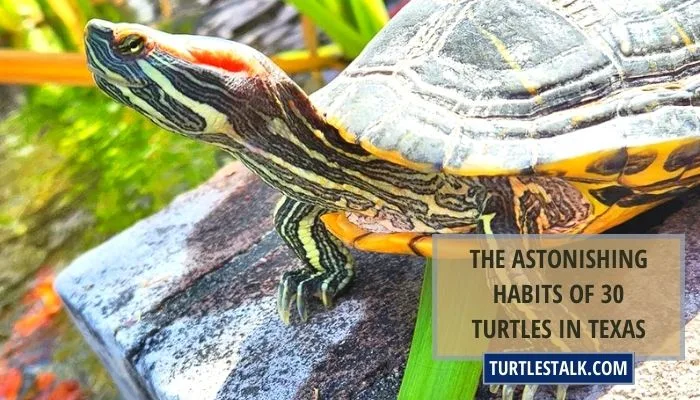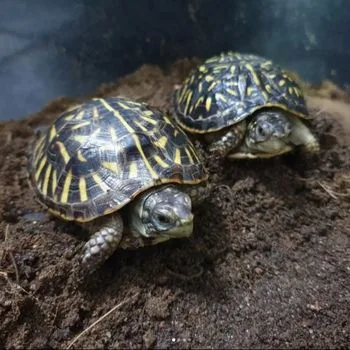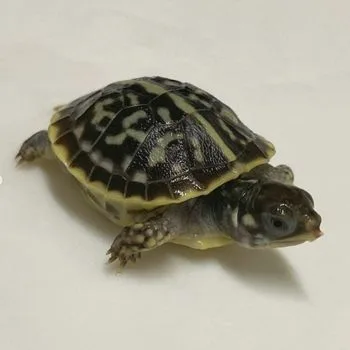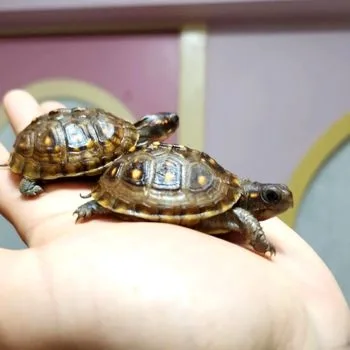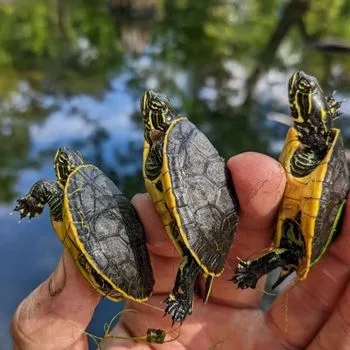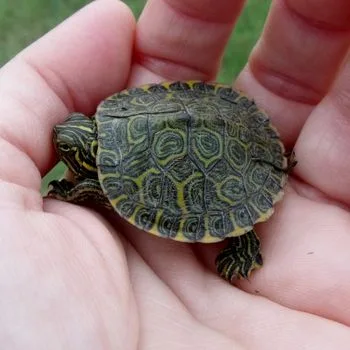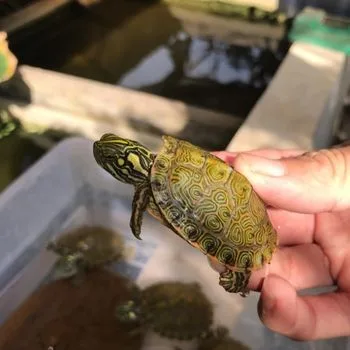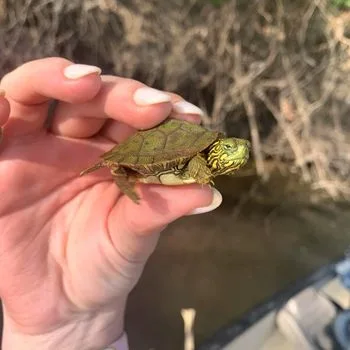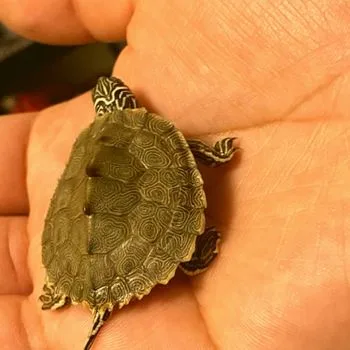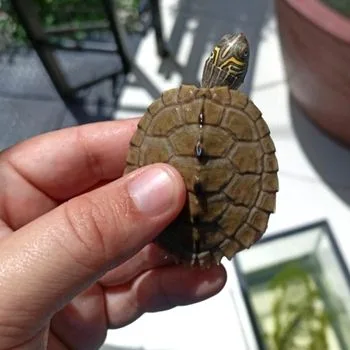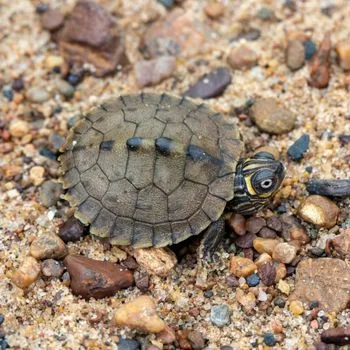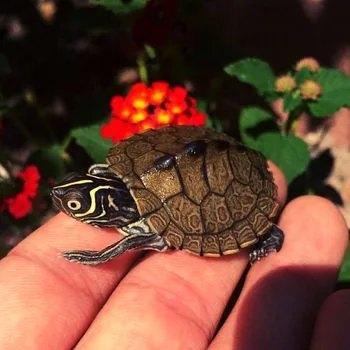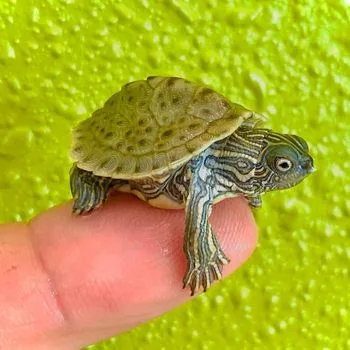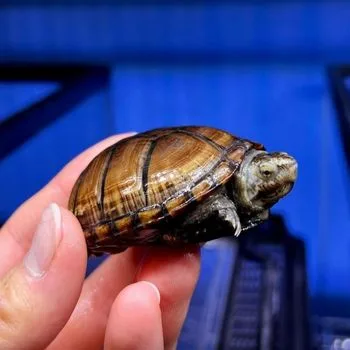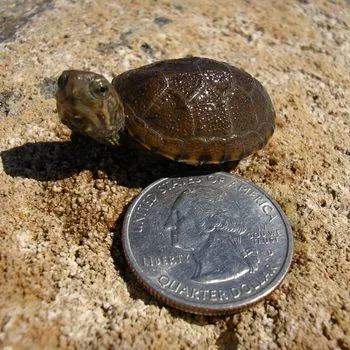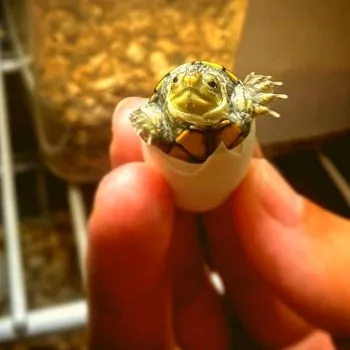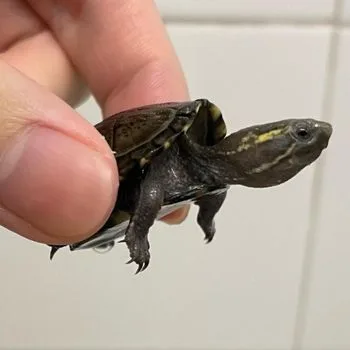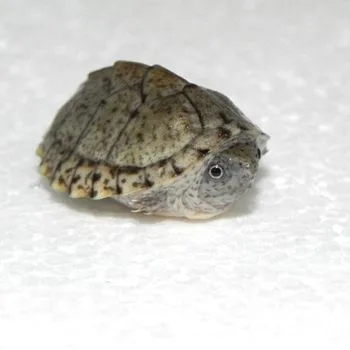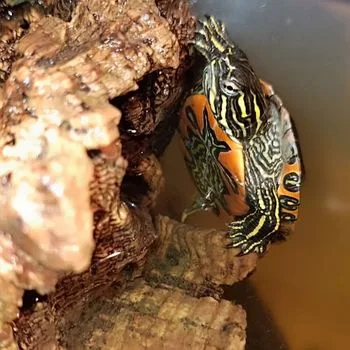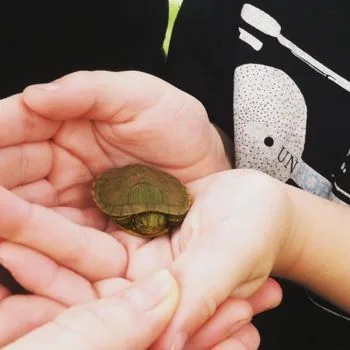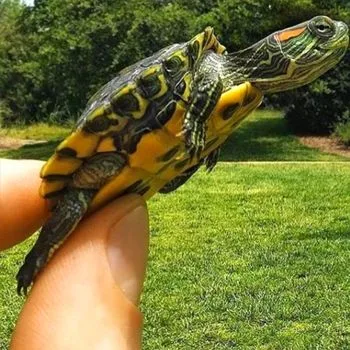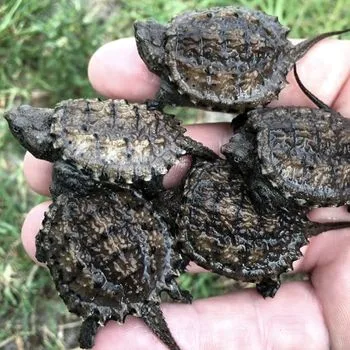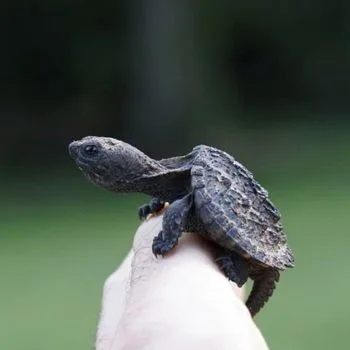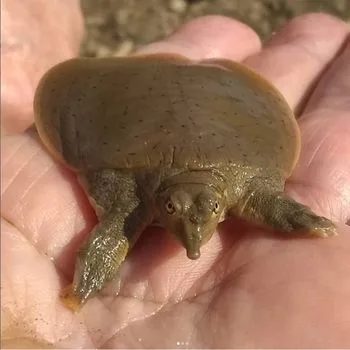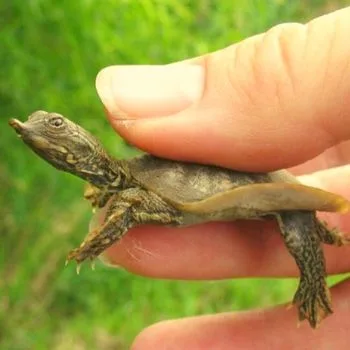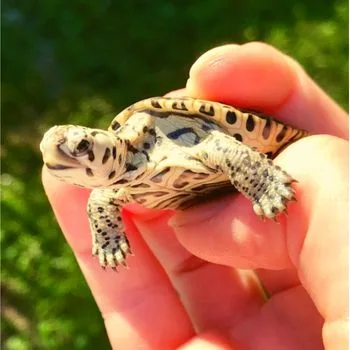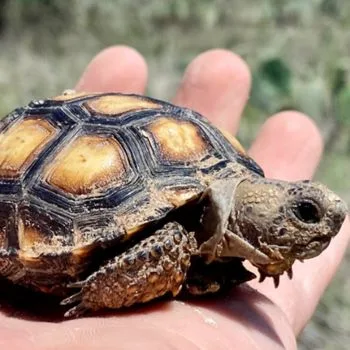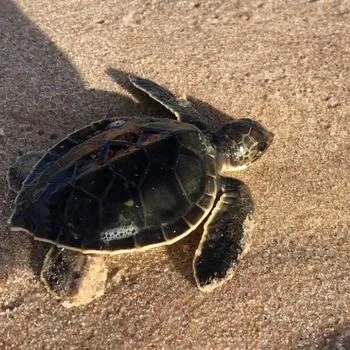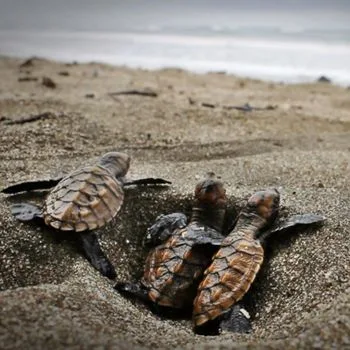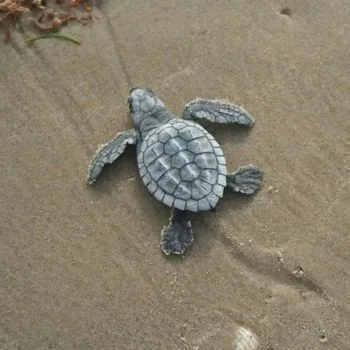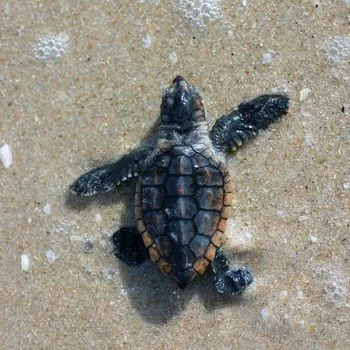The Astonishing Habits of 30 Turtles in Texas
Texas is home to some of the most unique creatures on Earth, and among them are the amazing turtles!
From tiny little red-eared sliders to gigantic alligator snapping turtles, Texas has 30 of these shelled reptiles. Not only that, but Texas also hosts four additional sea turtle species as well as a tortoise.
So if you’re looking for a truly wild experience, look no further than our beloved Lone Star State! With so many different turtle species roaming around here in Texas, it’s worth taking a closer look at what makes each one special. Come join us on this journey into the wonderful world of Turtles in Texas!
| # | Name | Details | Image |
| 1 | Desert Box Turtle (Terrapene ornata luteola) |
| 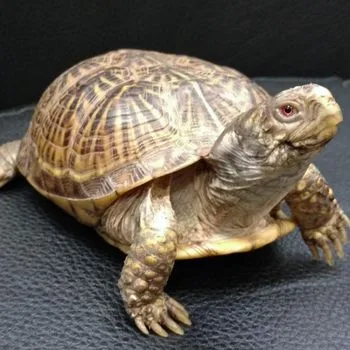 |
| 2 | Ornate Box Turtle (Terrapene Ornata Ornata) |
| 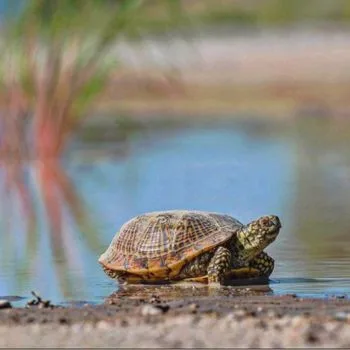 |
| 3 | Three-toed Box Turtle (Terrapene Carolina Triunguis) |
| 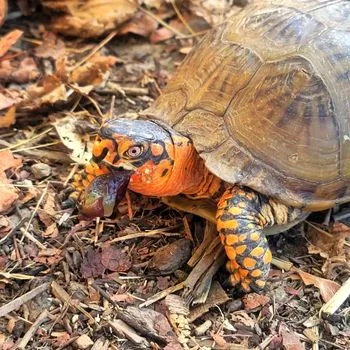 |
| 4 | Chicken Turtle (Deirochelys Reticularia) |
| 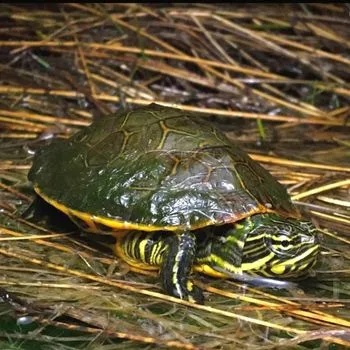 |
| 5 | Missouri River Cooter (Pseudemys Concinna) |
| 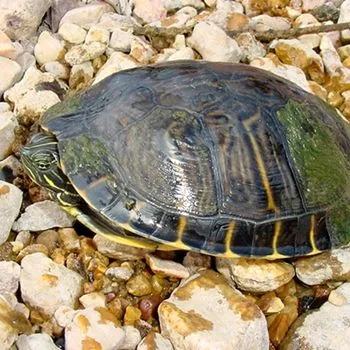 |
| 6 | Rio Grande Cooter (Pseudemys Gorzugi) |
| 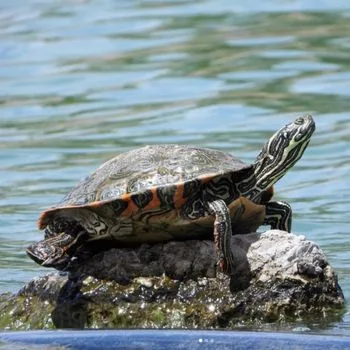 |
| 7 | Texas River Cooter (Pseudemys Texana) |
| 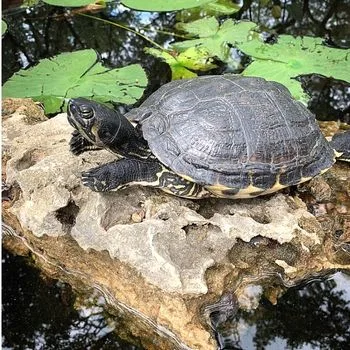 |
| 8 | Cagle’s Map Turtle (Graptemys Caglei) |
| 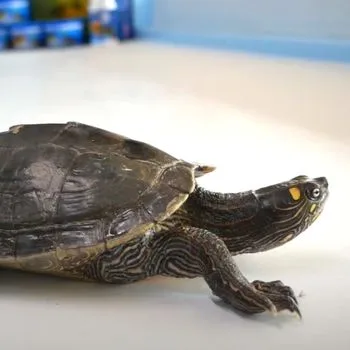 |
| 9 | Mississippi Map Turtle (Graptemys Pseudogeographica Kohnii) |
| 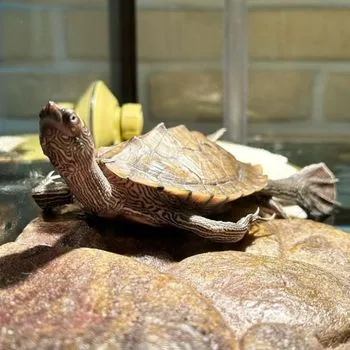 |
| 10 | Ouachita Map Turtle (Graptemys Ouachitensis) |
| 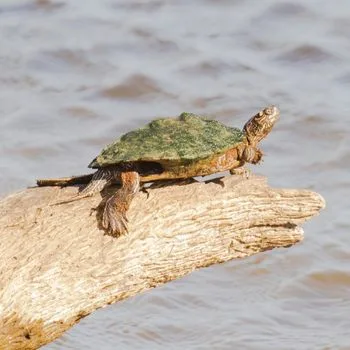 |
| 11 | Sabine Map Turtle (Graptemys Ouachitensis) |
| 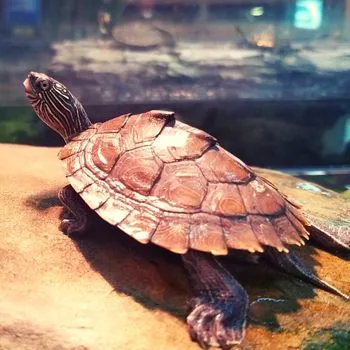 |
| 12 | Texas Map Turtle (Graptemys Versa) |
| 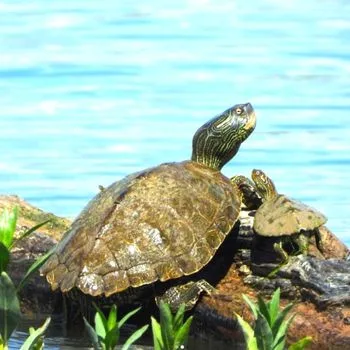 |
| 13 | Eastern Mud Turtle (Kinosternon Subrubrum) |
| 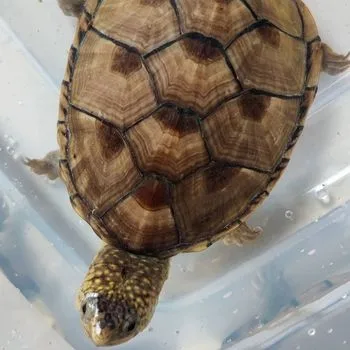 |
| 14 | Rough-Footed Mud Turtle (Kinosternon Hirtipes) |
| 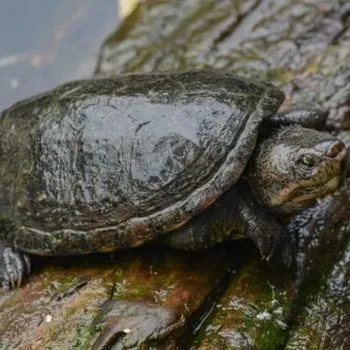 |
| 15 | Yellow Mud Turtle (Kinosternon Flavescens) |
| 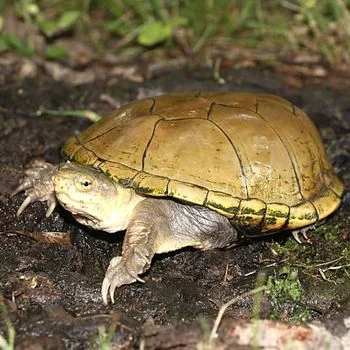 |
| 16 | Common Musk Turtle (Sternotherus Odoratus) |
| 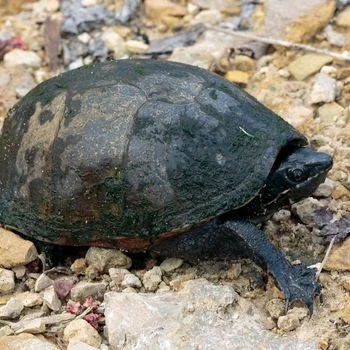 |
| 17 | Razor-backed Musk Turtle (Sternotherus Carinatus) |
| 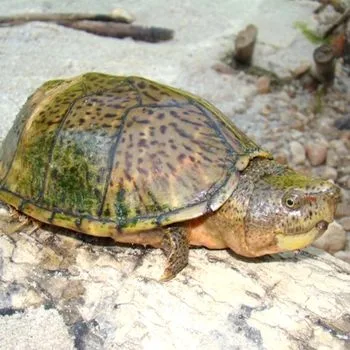 |
| 18 | Painted Turtle (Chrysemys picta) |
| 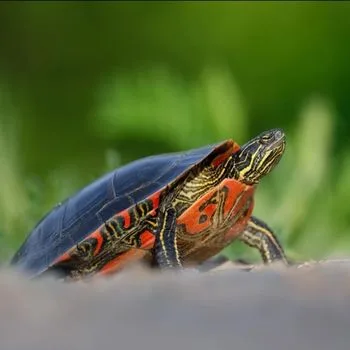 |
| 19 | Big Bend Slider (Trachemys Gaigeae) |
| 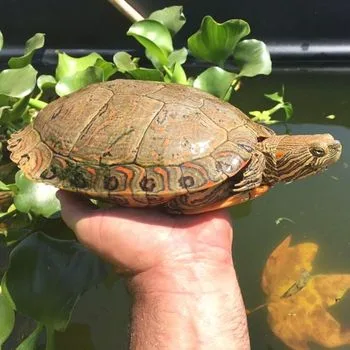 |
| 20 | Red Eared Slider (Trachemys Scripta Elegans) |
| 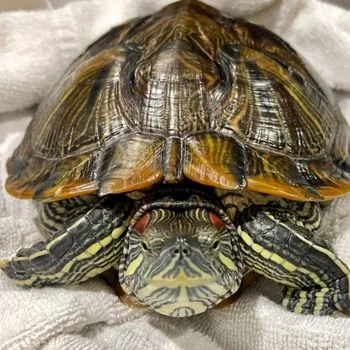 |
| 21 | Alligator Snapping Turtle (Macrochelys Temminckii) |
| 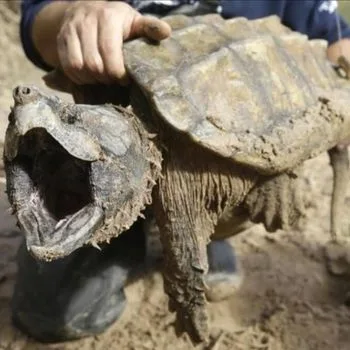 |
| 22 | Common Snapping Turtle (Chelydra serpentina) |
| 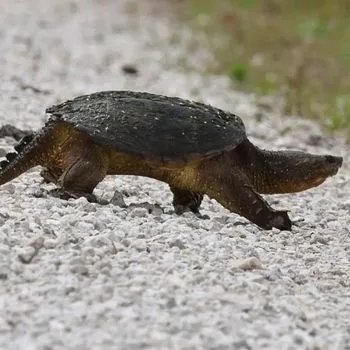 |
| 23 | Midland Smooth Softshell Turtle (Apalone mutica mutica) |
| 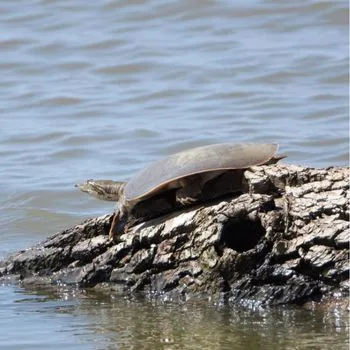 |
| 24 | Spiny Softshell Turtle (Apalone Spinifera) |
| 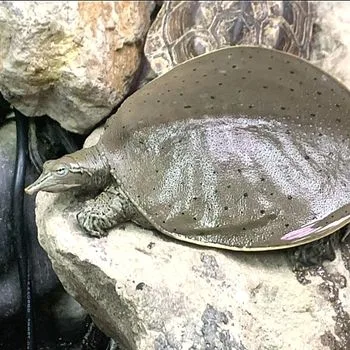 |
| 25 | Texas Diamond-backed Terrapin (Malaclemys Terrapin Littoralis) |
| 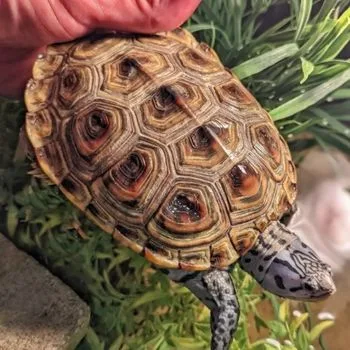 |
| 26 | Texas Tortoise (Gopherus Berlandieri) |
| 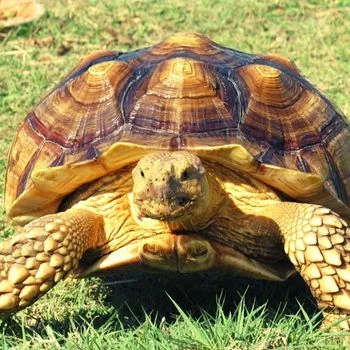 |
| 27 | Green Sea Turtle (Chelonia Mydas) |
| 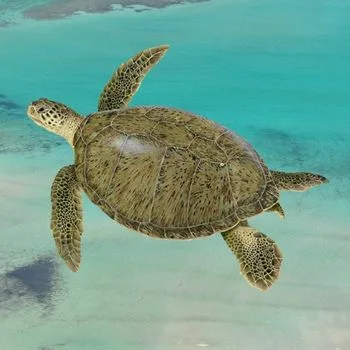 |
| 28 | Hawksbill Sea Turtle (Eretmochelys Imbricata) |
| 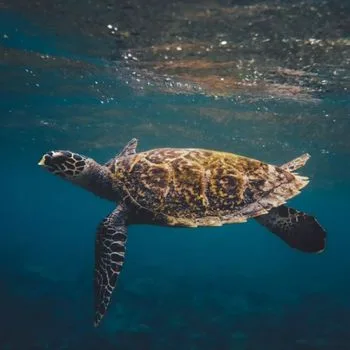 |
| 29 | Kemp’s Ridley Sea Turtle (Lepidochelys kempii) |
| 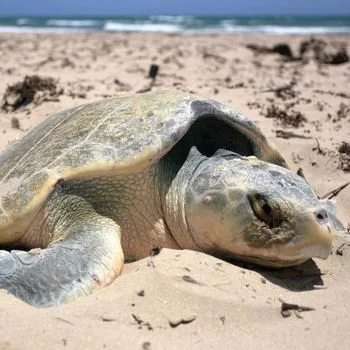 |
| 30 | Loggerhead Sea Turtle (Caretta Caretta) |
| 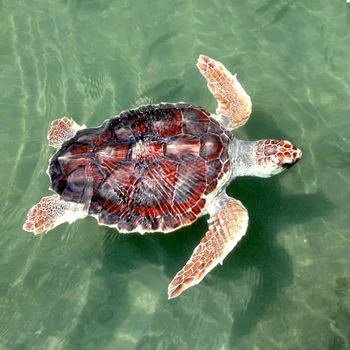 |
30 Turtles You Can Find in Texas
In total, there are 30 species of turtles in the state of Texas. This guide will take you on an exploration through each turtle type and provide tips for providing them with proper care. So, let’s get started on our journey into discovering all the wonders that these reptiles have to offer!
1. Desert Box Turtle (Terrapene ornata luteola)
- Family: Emydidae
- Genus: Terrapene
- Type: Terrestrial turtle
- Natural Habitat: Deserts and arid regions of the southwestern united states
- Lifespan: 20 to 30 years
- Maximum Size: 4-10 inches
- Maximum Weight: 8-16 ounces
- Prone to Diseases: Respiratory infections, shell rot, etc.
- Aggression Level: Low
- Predators: Coyotes, raccoons, skunks, and birds of prey
- Domestication: Can be kept as a pet
The Desert Box Turtle (Terrapene ornata luteola) is a unique and fascinating species of terrestrial turtle native to the deserts and arid regions of the southwestern United States. This turtle that dwells here in Texas typically ranges from 4-10 inches in size with adult males being larger, weighing 8-16 ounces on average.
These turtles are characterized by their yellow-orange shell patterned with black marks on each scute which may be used as identification markers within certain populations. The Desert Box Turtle has low aggression levels although they have never been known to bite humans but can make good companions for experienced keepers willing to provide them with special care needs here in Texas.
This species faces potential threats due to human activities such as development and pollution, however it is not currently listed as either threatened or endangered worldwide yet so conservation efforts must be taken before it’s too late so future generations may witness this remarkable species of turtle here in Texas.
2. Ornate Box Turtle (Terrapene Ornata Ornata)
- Family: Emydidae
- Genus: Terrapene
- Type: Terrestrial turtle
- Natural Habitat: Open landscapes such as pastures, prairies, and lightly forested areas
- Lifespan: 30 – 40 years
- Also Known As: Western box turtle
- Maximum Size: 4-5 inches
- Maximum Weight: 1-1.5 pounds
- Prone to Diseases: Vitamin deficiency, respiratory diseases
- Disease Carrier: Salmonella
- Aggression Level: Males display a tendency towards aggressive behavior, including biting and clashing their shells against each other
- Predators: Birds, such as crows, raptors, and ravens; domestic cats and dogs; opossums; raccoons; skunks; snakes; and even adult box turtles
- Domestication: Can be kept as pet
Have you ever wondered what kind of magical creature might be lurking in the forests and wetlands of Texas? Well, say hello to the Ornate Box Turtle! This amazing animal is closely related to its box turtle cousins, but it can also be identified by its intricate patterned shell – hence its name.
With a small head and body covered in an ornately patterned carapace or upper shell that’s usually brown with yellowish-orange markings, these turtles stand out from the crowd.
It spends most of its time hiding under cover while searching for food such as snails and insects, often seen out on warm summer days. So next time you take a walk through Texas, keep your eyes open for the Ornate Box Turtle – after all, who knows what else might be living there!
3. Three-toed Box Turtle (Terrapene Carolina Triunguis)
- Family: Emydidae
- Genus: Terrapene
- Type: Semi-aquatic turtle
- Natural Habitat: Humid areas such as marshes and grassy lands
- Lifespan: 30 – 40 years
- Maximum Size: 5 – 7 inches
- Maximum Weight: Up to 2 pounds
- Prone to Diseases: Clinical mycoplasma infections, mbd
- Disease Carrier: Salmonella
- Aggression Level: Not aggressive
- Predators: Mammals, such as raccoons, muskrats, birds and large fishes.
- Domestication: Illegal to possess without permit in most states
This remarkable reptile inhabits deciduous forests, grasslands, and wetlands across parts of the eastern and central United States including Texas.
Its average length is 4.5 to 5.5 inches while its weight averages between 0.5 to 1 pound with no size or gender differences seen in adults. Although they are mild by nature, these reptiles need proper care and maintenance if kept as pets – some states like Florida have even put restrictions on owning them as a pet!
Fortunately, their strong shells protect them from predators like snakes, raccoons, and skunks; however human activities such as habitat destruction have resulted in this species being listed as a special concern in some states due to the loss of habitats.
4. Chicken Turtle (Deirochelys Reticularia)
- Family: Emydidae
- Genus: Deirochelys
- Type: Freshwater turtle
- Natural Habitat: Freshwater wetlands, rivers, and ponds
- Lifespan: 40 years
- Maximum Size: 9 inches
- Maximum Weight: 2 pounds
- Prone to Diseases: Respiratory infections
- Aggression Level: Mild
- Predators: Raccoons, herons, and other predators
- Domestication: Can be kept as a pet
The Chicken Turtle is a beautiful species of freshwater turtle native to wetlands, rivers and ponds across much of the Eastern United States. These turtles may reach up to 9 inches in length when fully grown, with no distinction between male and female sizes; they can weigh up to 2 pounds. They have a lifespan of up to 40 years and are mildy aggressive, biting if threatened or provoked.
Chicken Turtles have distinctive markings on their shells; the plastron may be cream colored while the carapace has yellow spots with brown or black borders outlined in white.
Although they do not suffer from endangerment as such, these turtles are listed as species of special concern in some states including Texas. Given proper care and attention this species can thrive as pets but require large enclosures for basking purposes along with specialized diet for optimal health that should include live food like worms or other bugs.
The Chicken Turtle is an excellent swimmer due its long feet and webbed toes which allow it to stay underwater for longer periods of time than many other turtle species.
5. Missouri River Cooter (Pseudemys Concinna)
- Family: Emydidae
- Genus: Pseudemys
- Type: Freshwater turtle
- Natural Habitat: Inland rivers and streams, swamps and marshes
- Lifespan: 30 years
- Maximum Size: 17 inches
- Maximum Weight: 11 pounds
- Prone to Diseases: Respiratory infections, shell rot, and other health problems
- Aggression Level: Not aggressive
- Predators: Birds, mammals, and reptiles
- Domestication: Can be kept as pets
The Missouri River Cooter, also known by its scientific name Pseudemys concinna, is a freshwater turtle native to the United States. These aquatic creatures are found in rivers and streams, swamps and marshes, particularly around Texas. With an average lifespan of around 30 years, these turtles can grow up to 17 inches in length and weigh 11 pounds on average. Although they are not aggressive towards humans or other animals, juvenile turtles may be preyed upon by birds, mammals and reptiles.
In captivity, they require proper nutrition and housing in order to avoid shell rot or respiratory infections. Many US states do not have restrictions on keeping them as pets; however their overcollection for the pet trade has led to population decline in certain areas. They are strong swimmers and well-adapted to life in salt or brackish water habitats. Additionally, their webbed feet help them navigate through waters with swift currents.
Furthermore, the Missouri River Cooter enjoys a balanced diet comprised of plant material such as lettuce and commercial turtle feed available at pet stores. As omnivores, they may also consume animal proteins including insects or crayfish – furthering their adaptation to their natural environments. So if you encounter one of these majestic creatures near Texas, take the time to observe from a respectful distance!
6. Rio Grande Cooter (Pseudemys Gorzugi)
- Family: Emydidae
- Genus: Pseudemys
- Type: Aquatic turtle
- Natural Habitat: Freshwater wetlands
- Lifespan: Can live up to 60 years
- Also Known As: Gorzugi
- Maximum Size: Males: 11+ inches, females: 14+ inches
- Maximum Weight: 6 – 11 pounds
- Prone to Diseases: Metabolic bone disease and shell rot
- Aggression Level: Not aggressive
- Predators: Large fish, birds of prey, raccoons and snakes
- Domestication: Can be kept as pets
The Rio Grande Cooter (Pseudemys concinna) is a freshwater reptile native to Texas. It has an oval shaped carapace that is olive or brown in color, with yellow and/or reddish patches on its head. The males are generally smaller than the females, measuring up to 18-20 inches long when fully grown.
This species lives in slow-moving rivers, lakes and wetlands of the southeastern United States, where it feeds mainly on aquatic plants such as algae and vegetation found near water. They also consume insects and other small animals.
Rio Grande Cooters have strong webbed feet for swimming in their natural habitat but they can also be kept as pets if legal requirements are met. Proper care should always be taken into consideration as these reptiles are prone to shell rotting and respiratory infections when living under captive conditions.
Fortunately, this species has not been listed as endangered or threatened by the IUCN due to conservation efforts from authorities around the area where they live which will ensure we will keep enjoying seeing them bask under the sun for generations!
7. Texas River Cooter (Pseudemys Texana)
- Family: Emydidae
- Genus: Pseudemys
- Type: Freshwater turtle
- Natural Habitat: Shallow freshwater cooters
- Lifespan: On avg up to 40+ years
- Maximum Size: Males: up to 16 inches, females: 12+ inches
- Maximum Weight: 8 – 11+ pounds
- Prone to Diseases: Disfiguring shell disease
- Disease Carrier: Salmonella
- Aggression Level: Not aggressive
- Predators: Raccoons (procyon lotor), laughing gulls (larus atricilla), striped skunks (mephitis mephitis), american crows (corvus brachyrhynchos), and red foxes (vulpes vulpes).
- Domestication: Not suitable for pet
Have you ever come across a species of turtle that can be found living in freshwater rivers and streams primarily in the state of Texas? Well if your answer is no, then meet the Texas River Cooter! What makes this reptile so unique?
The Texas River Cooter has an impressive lifespan up to 20 years. The carapace length varies between 10-14 inches (25-36 cm), with males being slightly smaller than females. Despite their small size, they are known for their strong webbed feet allowing them to easily navigate through aquatic habitats.
Despite their peaceful demeanor, these turtles do have predators such as large fish, birds, mammals and alligators as well as humans which unfortunately make them prone to illegal harvest for the pet trade. If one were interested in owning a Texas River Cooter as a pet, they should ensure proper care is taken including correct enclosure setup and sanitation else they risk respiratory infections or shell rot due to unsanitary conditions.
Although not endangered yet it’s best we take action now before it’s too late – preserving wild habitats into the future – naturally occurring here in Texas but also spreading across neighboring states such as Louisiana, Arkansas and Oklahoma.
8. Cagle’s Map Turtle (Graptemys Caglei)
- Family: Emydidae
- Genus: Graptemys
- Type: Freshwater turtle
- Natural Habitat: Native to the san antonio river (texas, united states), which feeds into the guadalupe river. these turtles are concentrated (60-82% of all individuals) along a 27-km section of the middle guadalupe river
- Lifespan: 15 -20 years
- Maximum Weight: 4 – 8 pounds
- Prone to Diseases: Chronic shell abnormalities
- Disease Carrier: Salmonella
Welcome to the world of Cagle’s Map Turtle. This freshwater turtle belongs to the Emydidae family. It lives for an average of 15-20 years and weighs about 4-8 pounds.
This species that calls Texas its home is primarily concentrated around a 27 kilometer section on middle Guadalupe River where 60 – 82 percent of its population is located.
The turtles are known to be carriers of Salmonella, making them prone to certain diseases such as chronic shell abnormalities. They can also be found in some parts other than Texas including San Antonio and San Marcus rivers.
9. Mississippi Map Turtle (Graptemys Pseudogeographica Kohnii)
- Family: Emydidae
- Genus: Graptemys
- Type: Freshwater turtle
- Natural Habitat: Mississippi river basin in the united states, in large rivers, lakes, and swamps, with mud or sandy bottoms and abundant aquatic vegetation
- Lifespan: 30 years
- Maximum Size: Males: 7 inches, females: 12 inches
- Maximum Weight: Males: 1 pounds, females: 2 pounds
- Prone to Diseases: Respiratory infections, shell rot, and metabolic bone disease
- Aggression Level: Mildly aggressive
- Predators: Large fish and raccoons
- Domestication: Can be kept as pet
The Mississippi Map Turtle (Graptemys pseudogeographica kohnii) is a unique freshwater turtle native to the Mississippi River Basin. They can be found in large rivers, lakes, and swamps with mud or sandy bottoms and plenty of aquatic vegetation.
Males typically reach 5-7 inches in length, while females can grow up to 8-12 inches. The males generally weigh 200-400 grams, and females can weigh up to 1 kilogram. Although they are not aggressive towards humans and rarely bite, it is important to observe them from a respectful distance if spotted in their natural environment – particularly around Texas where they inhabit.
Mississippi Map Turtles are sometimes kept as pets but require proper care and housing if taken into captivity. Inadequate nutrition, poor ventilation or unclean environments may cause respiratory infections or shell rot.
Since they spend much of their time in the water, they have webbed feet in order to swim quickly and dive deep when necessary. Unfortunately, populations in some areas are declining due to habitat destruction and over-collection for the pet trade despite them not being listed as an endangered species.
In addition to the Mississippi River Basin itself, these fascinating creatures have also been observed throughout Illinois, Iowa, Missouri, Tennessee, Arkansas, Kentucky – and possibly Alabama, Indiana and Ohio as well! If you find yourself exploring Texas, keep your eyes open for this stunning species – you might just get lucky!
10. Ouachita Map Turtle (Graptemys Ouachitensis)
- Family: Emydidae
- Genus: Graptemys
- Type: Aquatic turtle
- Natural Habitat: Slow-moving freshwater rivers, streams, and lakes
- Lifespan: 30 – 50 years
- Also Known As: Sawback
- Maximum Size: Males: 3 to 6.5 inches, females: 4.0 to roughly 11 inches
- Maximum Weight: 1.5 – 4.5 pounds
- Prone to Diseases: Shell rot, respiratory infections
- Disease Carrier: Salmonella
- Aggression Level: Not aggressive
- Predators: Raccoons, skunks, and foxes
- Domestication: Can be kept as pet
Have you ever seen the magnificent Ouachita Map Turtle (Graptemys ouachitensis)? This freshwater turtle is found in slow-moving rivers, streams, and oxbow lakes in Arkansas and Oklahoma.
With adult sizes measuring 8-11 inches in length, these turtles make for a great pet – though it’s important to check local regulations as Texas may have different restrictions when it comes to owning a turtle.
They are not aggressive by nature but can fall prey to predators like raccoons and otters or even large fish or birds of prey on occasion. When cared for properly, these turtles can live up to 20-30 years!
11. Sabine Map Turtle (Graptemys Ouachitensis)
- Family: Emydidae
- Genus: Graptemys
- Type: Aquatic turtle
- Natural Habitat: Oxbows, lakes, and swamps that are connected to rivers and creeks; areas with aquatic vegetation and logs are preferred.
- Lifespan: 11 to 15+ years
- Maximum Size: Males: 5+ inches, females: 10+ inches
- Maximum Weight: 1 – 2 pounds
- Prone to Diseases: Respiratory infections, shell rot, and other diseases if kept in unsanitary conditions.
- Disease Carrier: Salmonella
- Aggression Level: Aggressive baskers
- Predators: Racoons, coyotes and skunks
- Domestication: Not ideal for pet
The Sabine Map Turtle (Graptemys Sabinensis) is a species of aquatic turtle found in Texas and other parts of the US. This remarkable creature has an impressive lifespan that can reach up to 20 years, with an average carapace length between 4-8 inches.
Males and females have no significant differences in size, yet both sexes require special care when kept by humans as pets.
Adapted to life underwater, these turtles have webbed feet for swimming and a streamlined carapace aiding them move swiftly around their slow rivers, streams and oxbow lakes they inhabit. Whilst adults have few predators, eggs and hatchlings remain vulnerable to predation from raccoons, birds or any other local predator.
As such the Sabine Map Turtle is currently listed as a species of special concern in Louisiana where all commercial exploitation is strictly prohibited protecting this unique turtle ensuring generations will continue to thrive for years too come!
12. Texas Map Turtle (Graptemys Versa)
- Family: Emydidae
- Genus: Graptemys
- Type: Freshwater turtles
- Natural Habitat: The texas map turtle, scientifically named graptemys versa, is an endemic species exclusive to the edwards plateau of texas. it inhabits the streams and waterways of the colorado river basin.
- Lifespan: Over 30 years
- Maximum Size: The texas map turtle, a member of the graptemys genus, is the smallest species in the group. the females can grow 5 to 8 inches long, while males average 2.5 to 4 inches.
- Maximum Weight: Males: 0.5 to, females: 1.5 – 5 pounds
- Prone to Diseases: Chronic shell abnormalities
- Disease Carrier: Salmonella
- Predators: Adults of spiny softshell turtles face few predators besides humans, but young ones can be hunted by raccoons, herons, and big fish.; can fiercely defend themselves by extending their necks and biting attackers when threatened.
- Domestication: Can be kept as pets
Have you ever heard of the Texas Map Turtle, an incredible freshwater species dwelling in Texas? This unique reptile is a member of the Graptemys genus and can grow up to 8 inches in length for females.
However, males typically remain between 2.5 – 4 inches long. With their hard shells and aggressive nature when threatened, these turtles are well protected from predators like herons or raccoons – yet they continue to face threats from humans as carriers of salmonella bacteria.
Though somewhat difficult to domesticate due to their potential for chronic shell abnormalities, with conservation efforts this fascinating species may live on for generations more if we make responsible choices when visiting their habitats!
13. Eastern Mud Turtle (Kinosternon Subrubrum)
- Family: Kinosternidae
- Genus: Kinosternon
- Type: Mud turtle
- Natural Habitat: Freshwater wetlands, swamps, and slow-moving streams
- Lifespan: 30 years
- Maximum Size: 5 inches
- Maximum Weight: 9.27 ounces
- Aggression Level: Low
- Predators: Raccoons, snakes, and birds of prey
- Domestication: Not suitable as a pet
The Eastern Mud Turtle (Kinosternon subrubrum) is a small freshwater turtle found in the southeastern United States, including Texas. This species of turtle is known for its highly aquatic adaptations and webbed feet, which make it well-suited to life in slow-moving streams, swamps, and wetlands. The Eastern Mud Turtle can reach up to 5 inches in length and has a maximum weight of 9.27 ounces. It is not aggressive, but may bite if provoked—so exercise caution when near any wild turtles!
The diet of the Eastern Mud Turtle consists primarily of aquatic invertebrates such as snails, worms, and insects. They are also opportunistic scavengers, meaning they will take advantage of carrion when available. Predators of this species include raccoons, snakes, and birds of prey. The lifespan of these turtles is up to 30 years in the wild and due to their abundance across the southeastern United States are not listed as threatened or endangered.
Although they do not make suitable pets due to their size and temperament being unsuitable for captivity, taking care to observe local wildlife regulations is important when interacting with wild Eastern Mud Turtles in Texas . Taking steps such as preserving their natural habitats helps protect this species from destruction or poaching—ensuring they remain an iconic part of our environment for many more years to come!
14. Rough-Footed Mud Turtle (Kinosternon Hirtipes)
- Family: Kinosternidae
- Genus: Kinosternon
- Type: Mud turtle
- Natural Habitat: Mountain streams, lowland lakes
- Lifespan: 40 years
- Maximum Size: 7+ inches
- Maximum Weight: N/a
- Prone to Diseases: Ear infections, vitamin deficiencies, metabolic bone disease, and intestinal parasites
- Aggression Level: Aggressive
- Predators: Raccoons, pigs
- Domestication: Can be kept as pet
Meet the Rough-Footed Mud Turtle (Kinosternon Scorpioides), a semi-aquatic turtle found in Texas and other parts of the United States.
With a carapace length of up to 7 inches, this species is well adapted for its aquatic habitat, possessing powerful webbed feet for swimming and burrowing through mud. It is also known to live up to 25 years!
This unique species has many predators in its natural environment – hawks, herons, raccoons, skunks and opossums are all threats it must face – making conservation efforts ever more important.
In addition, due to their intricate needs as pets they are not suitable for everyone; if you intend on keeping one ensure that you understand their specific requirements and adhere to all local laws before obtaining one.
Finally individuals should be mindful when observing them out in nature so we can continue protecting these remarkable creatures into the future!
15. Yellow Mud Turtle (Kinosternon Flavescens)
- Family: Kinosternidae
- Genus: Kinosternon
- Type: Freshwater turtle
- Natural Habitat: Found in habitats ranging from slow-moving rivers to permanent ponds, including floodplain swamps and seasonal wetlands.
- Lifespan: 20 – 30+ years
- Maximum Size: 5 – 12 inches
- Maximum Weight: 10 – 35 pounds
- Prone to Diseases: Shell disease
- Disease Carrier: Salmonella
- Aggression Level: Not aggressive
- Predators: Raccoons, alligators
- Domestication: Can be kept as pets
The Yellow Mud Turtle (Kinosternon flavescens) is a remarkable creature, found in habitats ranging from slow-moving rivers to permanent ponds. This freshwater turtle is typically 5 to 12 inches long and can live up to 30 plus years! It has an interesting yellowish shell with black markings on its upper carapace that sometimes feature red or orange hues along the edges; making it stand out among other species of turtles.
Yellow mud turtles are not aggressive creatures, preferring solitude apart from mating season when we often find several males competing for the same female. These reptiles have many predators such as raccoons and alligators who prey on them easily due to their small size and lack of protection against enemies.
Sadly, this species faces endangerment in Texas due largely to destruction of its habitats which require conservation efforts if we wish future generations will enjoy seeing Yellow Mud Turtles back thriving in nature just like today!
16. Common Musk Turtle (Sternotherus Odoratus)
- Family: Kinosternidae
- Genus: Sternotherus
- Type: Terrestrial and aquatic turtle
- Natural Habitat: Streams, rivers, ponds, and swamps in eastern north america
- Lifespan: 10-20 years
- Also Known As: Stinkpot
- Maximum Size: 4-8 inches
- Maximum Weight: 0.7 pounds
- Prone to Diseases: Respiratory infections and shell rot
- Aggression Level: Agressive but not known to bite humans
- Predators: Raccoons, mink, birds of prey, and large fish
- Domestication: Can be kept as pets
The Common Musk Turtle (Sternotherus Odoratus) is a terrestrial and aquatic turtle found in streams, rivers, ponds, and swamps throughout the eastern United States. This species can reach an impressive length of 4-8 inches when fully grown, with an average weight of 0.7 pounds. Interestingly, these turtles are also known as ‘Stinkpots’ due to their ability to secrete a musky odour when alarmed or threatened.
Their flat carapace makes them well adapted for life in the water, with strong webbed feet and sharp claws helping them cling onto rocks or vegetation while searching for food. As omnivores they feed on snails, clams and other insects as well as plant matter such as algae and leaves – making them a vital part of the local ecosystem here in Texas. They are generally non-aggressive but may bite if disturbed or threatened by predators such as river otters, raccoons, mink and birds of prey.
The Common Musk Turtle is not currently listed as an endangered species but habitat loss due to human activities such as development and pollution can lead to a decrease in population numbers – especially without proper conservation efforts. Additionally, illegal pet trade can be an issue that affects their vulnerability so it’s important to check local regulations before acquiring this species as a pet.
Despite all this however, with proper care these turtles have been known to live up to 20 years making them great companions for experienced keepers who are willing to put in the effort necessary for their special care needs here in Texas.
17. Razor-backed Musk Turtle (Sternotherus Carinatus)
- Family: Kinosternidae
- Genus: Sternotherus
- Type: Aquatic turtle
- Natural Habitat: Heavily vegetated shallow ponds, slow moving water swamps, and streams
- Lifespan: 20 – 40 years
- Also Known As: Carinated musk turtle
- Maximum Size: Roughly 6 inches
- Maximum Weight: 0.5 to 1 pound
- Prone to Diseases: Vitamin diseases, abscesses, shell infections and fractures, and parasites
- Aggression Level: Aggressive
- Predators: Raccoons, skunk, fox, birds of prey, bullfrogs. largemouth bass, alligators
- Domestication: Popularly kept as pets
The Razor-backed Musk Turtle (Sternotherus carinatus) is a unique species of reptile found across Texas. This small but powerful creature can reach up to 5-7 inches in length, with males being smaller than females.
It has webbed feet and the ability to hold its breath for long periods, making it well suited to life in freshwater rivers, swamps and streams.
Though mildly aggressive, it rarely bites humans if feeling threatened. Unfortunately wild populations have been impacted by habitat loss and hunting so we must respect their natural habitats if we want them to survive for generations more to come! Let’s make sure this remarkable animal continues thriving in Texas.
18. Painted Turtle (Chrysemys picta)
- Family: Emydidae
- Genus: Chrysemys
- Type: Aquatic turtle
- Natural Habitat: Rivers, streams, and large ponds in the northern united states
- Lifespan: 20 – 30 years
- Maximum Size: Males: can reach up to 5.5 – 6 inches, females: 5 – 10 inches
- Maximum Weight: Males: roughly 300 gm, females: on avg 500 gm
- Prone to Diseases: Shell infections
- Disease Carrier: Salmonella
- Aggression Level: Not aggressive
- Predators: Raccoons, skunks, foxes, herons, other birds, snakes, and large predaceous fish
Have you ever wanted to own a beautiful and unique pet? The Painted Turtle (Chrysemys picta) may just be the perfect fit for you!
Native to North America, this semi-aquatic reptile lives in Texas’s rivers, lakes, marshes and ponds. The carapace length of these turtles ranges from 4-10 inches long with females being larger than males.
With proper care and clean living conditions, they have an average lifespan of 20-30 years – making them great companion animals for your family or even as solo pets. Just make sure to check what regulations there are in Texas so that you can give your pet painted turtle the best life possible!
19. Big Bend Slider (Trachemys Gaigeae)
- Family: Emydidae
- Genus: Trachemys
- Type: Aquatic turtle
- Natural Habitat: Freshwater rivers, streams, ponds, and lakes in big bend region of texas and northern mexico
- Lifespan: 20 years
- Also Known As: Mexican plateau slider
- Maximum Size: 10-12 inches
- Prone to Diseases: Respiratory infections and fungal infections
- Aggression Level: Not aggressive but they may bite if they feel threatened
- Predators: Eggs and hatchlings are preyed upon by birds, mammals, and other reptiles
- Domestication: Can be kept as pets
The Big Bend Slider (Trachemys Gaigeae) is a species of freshwater turtles native to the Big Bend region of Texas and northern Mexico. This species is medium-sized, with adult females reaching around 10-12 inches in carapace length and males slightly smaller. These turtles can be kept as pets in Texas if given proper care. They are well adapted to their aquatic environment, with webbed feet and a streamlined carapace.
Big Bend sliders are not naturally aggressive but may bite if provoked or threatened. In the wild, they mainly feed on plants, worms and insects while adult sliders have few predators.
However, their eggs and hatchlings may be preyed upon by birds, mammals and other reptiles. If not kept in optimal conditions or allowed enough space to roam these turtles may become prone to illnesses such as respiratory infections or fungal infections.
Fortunately, this species is not endangered and it is found abundantly in Texas rivers, streams, ponds and lakes throughout the Big Bend region of Texas and northern Mexico.
However, it is illegal to take them from the wild, so they should only be kept as pets if they were purchased or adopted. With proper care and the right environment, these turtles can make lovely companions.
20. Red Eared Slider (Trachemys Scripta Elegans)
- Family: Emydidae
- Genus: Trachemys
- Type: Aquatic turtle
- Natural Habitat: Streams, rivers, ponds, lakes, swamps, and marshes
- Lifespan: 20 – 30 years
- Also Known As: Red-eared terrapin
- Maximum Size: 7 – 12 inches, females get larger than 12 inches
- Maximum Weight: 3 – 6 pounds
- Prone to Diseases: Respiratory infections, shell rot, and other diseases if kept in unsanitary conditions.
- Disease Carrier: Salmonella
- Aggression Level: Not aggressive
- Predators: Raccoons, otters, fish, frogs, snakes, skunks and birds
- Domestication: Can be kept as pets
The Red Eared Slider (Trachemys scripta elegans) is a freshwater reptile with a striking appearance. Found in Texas’s waterways, these turtles can reach up to 10-12 inches long as adults and can live for an impressive 30 years. They have webbed feet that are adapted for swimming, making them incredibly agile aquatic creatures.
Males and females exhibit different size ranges, with males being more diminutive compared to the females and juveniles measuring only 2-3 inches when fully grown. Although they may take on aggressive postures if threatened, their bite force is not enough to cause any damage to humans or other larger animals.
It’s important that we respect the habitats of these amazing reptiles so that future generations will be able to enjoy them too – keep their environments clean by disposing of garbage properly and avoid disturbing the fragile ecosystems where they make their homes!
21. Alligator Snapping Turtle (Macrochelys Temminckii)
- Family: Chelydridae
- Genus: Macrochelys
- Type: Freshwater turtle
- Natural Habitat: Slow-moving rivers, canals, lakes, and swamps in the southeastern united states
- Lifespan: 60-70 years
- Maximum Size: 30 inches
- Maximum Weight: 220 pounds
- Aggression Level: Moderate
- Predators: Large fish, birds of prey, and humans
- Domestication: Not recommended as pet
The Alligator Snapping Turtle (Macrochelys temminckii) is a large freshwater turtle native to the southeastern United States. Adults can reach up to 30 inches in length and weigh up to 220 pounds. Juvenile alligator snapping turtles are much smaller, usually between 4-10 inches in length. When you’ll come across this species in Texas, you’ll notice that it has a very unique appearance, with an oversized head and a spiked tail that looks like an alligator’s claw.
The shell of this turtle is dark brown or black with yellow spots and stripes over it, giving the impression of scales on an alligator’s back.
Alligator snapping turtles are powerful predators and their bite force is strong enough to break through bone. They feed mainly on fish but also consume invertebrates, amphibians, and other turtles. These turtles are ambush predators, waiting for prey to come close before attacking. They are not considered aggressive towards humans but should still be handled with caution as they may bite if startled.
In the wild, alligator snapping turtles can live up to 60-70 years and have few natural predators due to their large size. However, their populations have declined in some areas due to habitat loss, illegal harvesting, and pollution. In order to protect this species from further decline, many states regulate or ban the possession of alligator snapping turtles as pets. Furthermore, it is important that you research the specific laws and regulations of your state or municipality before owning a pet turtle.
22. Common Snapping Turtle (Chelydra serpentina)
- Family: Chelydridae
- Genus: Chelydra
- Type: Freshwater turtle
- Natural Habitat: Freshwater habitats such as lakes, rivers, and swamps
- Lifespan: 50 years
- Maximum Size: 19 inches
- Maximum Weight: 40 pounds
- Prone to Diseases: Fungal infections and shell rot
- Aggression Level: Not aggressive until provoked
- Predators: River otters, bears and coyotes
- Domestication: Not recommended as pets
The Common Snapping Turtle, scientifically known as Chelydra serpentina, is an aquatic species native to freshwater habitats such as lakes, rivers and swamps. These turtles are highly adaptable and can live up to 50 years in the wild.
Adult Common Snapping Turtles typically measure 10-16 inches in shell length but can grow up to 19 inches and weigh around 40 pounds. They have a powerful bite with an estimated pressure of over 600 psi, making them one of the strongest biters among reptiles. Despite their strength they are generally not aggressive animals, though it is best to not provoke them and take caution around them.
Common Snapping Turtles often face threats from predators such as river otters, bears and coyotes when living out in the wild.
Unfortunately, their habitat is also threatened by human activities such as development and pollution which can lead to a decrease in population numbers if conservation efforts are not taken soon here in Texas.
Although they make fascinating pets due to their long lifespan of up to 50 years when cared for properly, some states have regulations or restrictions on owning them so check with local authorities before acquiring this species as a pet.
These turtles have webbed feet for swimming and a long tail for propulsion allowing them to move quickly through water which also makes them difficult prey for predators.
Furthermore, although they occupy multiple states across North America from Alabama to Wyoming there is no other name than the Common Snapping Turtle so it’s easy to identify.
It should be noted that this species does not carry any significant disease that can be transmitted to humans yet they may still be prone to diseases like fungal infections or shell rot when kept in unsanitary conditions so proper care must be taken here in Texas when considering owning one of these remarkable creatures as a pet.
23. Midland Smooth Softshell Turtle (Apalone mutica mutica)
- Family: Trionychidae
- Genus: Apalone
- Type: Freshwater turtle
- Natural Habitat: Slow-moving streams, rivers, lakes, and ponds in the midwestern and southeastern united states
- Lifespan: 25-30 years
- Maximum Size: 10 inches
- Prone to Diseases: Shell rot and respiratory infections
- Aggression Level: Mild, non-aggressive species
- Predators: Alligators, large fish, and snapping turtles
- Domestication: Can be kept in captivity
Native to the midwestern and southeastern United States, including Texas, the Midland Smooth Softshell Turtle (Apalone mutica mutica) is a majestic freshwater species.
With adults typically reaching 7-8 inches in length and some individuals even reaching up to 10 inches, these turtles weigh an average of 1-4 pounds with no significant size variations between males and females. They can be found in slow-moving streams, rivers, lakes, and ponds and display mild, non-aggressive behavior.
Despite not being commonly kept as pets, if taken into captivity they require proper care such as providing a balanced diet and a clean environment. Furthermore, they may be vulnerable to shell rot and respiratory infections if kept in unclean or poorly ventilated environments. Predation from alligators, large fish, birds of prey or raccoons may occur whilst eggs and hatchlings are prone to predation from skunks or other predators.
Although not currently listed as endangered by IUCN standards – populations of Midland Smooth Softshell Turtles may be declining due to habitat loss and collection for the pet trade.
These aquatic creatures are also found in Arkansas, Illinois, Indiana, Iowa, Kansas, Kentucky, Louisiana, Missouri , Mississippi , Ohio , Oklahoma , Tennessee ,and Texas. Respectful caution should also be taken when spotting a Midland Smooth Softshell Turtle since although rarely aggressive towards humans – they are still considered vulnerable according to IUCN standards and hence should not be disturbed needlessly even if encountered in nature during your visit at Texas.
24. Spiny Softshell Turtle (Apalone Spinifera)
- Family: Trionychidae
- Genus: Apalone
- Type: Freshwater turtle
- Natural Habitat: Predominantly discovered in rivers and lakes, can also be found in nearby creek beds and smaller water bodies such as ditches and ponds.
- Lifespan: 40+ years
- Also Known As: Spinifera (spine-bearing), spiny
- Maximum Size: 8 – 20+ inches
- Maximum Weight: 25 pounds
- Prone to Diseases: Vitamin deficiencies, metabolic bone disease, and intestinal parasites
- Disease Carrier: Foodborne infections, vibrio cholerae
- Aggression Level: Aggressive when threatened
- Predators: Raccoons, skunks, and foxes frequently disrupt the nesting sites of spiny softshell turtles. while young softshell turtles face predation from raccoons, herons, and big fish, adult turtles mainly fall victim to human hunting and lack significant natural predators.
- Domestication: Cane be kept as pets
The Spiny Softshell Turtle (Apalone Spinifera) is a species of freshwater turtle found in the rivers, streams and lakes across Texas. They are an impressive creature with adults reaching 8-14 inches in length and males weighing up to 3 pounds while females can reach up to 8 pounds. These turtles have remarkable adaptations such as webbed feet, streamline shells and long snorkel like nasal tubes for breathing underwater.
Unfortunately, some populations of these beautiful creatures may be declining due to rapid habitat loss or exploitation but luckily they are not currently listed as endangered species – yet.
When given proper care, maintenance and facilities these turtles can make great pets; however it’s best practice to always check with local authorities first because it might be illegal from state to state. They are usually quite gentle but can become aggressive when feeling threatened or cornered so it’s crucial for their owners to educate themselves about how best handle them correctly.
By taking the necessary steps we can ensure that this amazing species will continue to thrive!
25. Texas Diamond-backed Terrapin (Malaclemys Terrapin Littoralis)
- Family: Emydidae
- Genus: Malaclemys
- Type: Aquatic turtle
- Natural Habitat: Found in estuaries, tidal creeks, and saltwater marshes
- Lifespan: 40+ years
- Maximum Size: Males: 6-9 inches, females: 4 – 6 inches
- Maximum Weight: 0.5 – 1.5 pounds
- Prone to Diseases: Vitamin deficiencies, metabolic bone disease, and intestinal parasites
- Disease Carrier: Salmonella
- Aggression Level: Aggressive baskers
Witness the majestic Texas Diamond-backed Terrapin, a species of aquatic turtles belonging to the family Emydidae. They are found in estuaries and saltwater marshes, boasting an impressive lifespan of 40+ years! Male terrapins grow up to 9 inches long whilst females reach 6 inches in length – both weigh about half a pound to 1.5 pounds at most.
These Texas residents can be aggressive baskers when threatened, although they typically don’t pose any harm. Sadly, due to their salmonella carrier trait they are susceptible to illnesses like vitamin deficiencies, metabolic bone disease and intestinal parasites unless cared for properly.
The Texas Diamond-backed Terrapin’s range stretches from Massachusetts to Texas, including the Florida Keys. They are also present in the National Aquarium and can be admired there or in the wild if you’re lucky enough. Let’s help these creatures thrive by giving them their much needed attention!
26. Texas Tortoise (Gopherus Berlandieri)
- Family: Testudinidae
- Genus: Gopherus
- Type: Aquatic turtle
- Natural Habitat: Scrub forests in humid, subtropical areas, preferring open scrub woods and well-drained, sandy soils
- Lifespan: 50+ years
- Maximum Size: 8+ inches
- Maximum Weight: 6 – 10 pounds
- Prone to Diseases: Upper respiratory tract disease (urtd)
- Disease Carrier: Salmonella
- Aggression Level: Not aggressive
The Texas Tortoise is an aquatic turtle, part of the family Testudinidae. It can be found roaming in scrub forests in humid and subtropical regions, preferring open woods with sandy soils. They are quite large creatures, measuring at least 8 inches and weighing up to 10 pounds!
These gentle giants have been known to live for over 50 years in Texas, making it a fantastic species that should not be overlooked when exploring its natural habitats here.
Sadly due to their vulnerability to diseases such as upper respiratory tract disease (URTD), they have become carriers of Salmonella. It’s essential that we take measures now if we don’t want future generations living without these majestic turtles in our home state of Texas. Let’s hope David Attenborough will get the chance to witness this creature one day soon!
27. Green Sea Turtle (Chelonia Mydas)
- Family: Cheloniidae
- Genus: Chelonia
- Type: Marine turtle
- Natural Habitat: Coastal waters, bays, lagoons, and shallow seagrass beds in tropical and subtropical oceans
- Lifespan: 80 years
- Also Known As: Green turtle
- Maximum Size: 5 feet
- Maximum Weight: 400 pounds
- Aggression Level: Low
- Predators: Birds, mammals, and large fish
- Domestication: Not suitable as pets
Introducing the majestic Green Sea Turtle, an incredible species that inhabits tropical and subtropical coastal oceans in many parts of the world. These residents of Texas can reaching up to five feet in length and weigh around 400 pounds for females.
This marine turtle can live for about 80 years if left undisturbed by humans or predators such as birds, mammals, or large fish.
With flippers adapted for swimming and a streamlined body shape allowing it to hold its breath underwater for long periods at a time, they are highly adapted to navigating in their natural aquatic habitats.
Sadly enough though these creatures are endangered worldwide due to human actions which puts them at risk of extinction unless preventative steps are taken soon. Let’s strive towards preserving its population so future generations can witness Texas’s coastlines come alive with the beauty of these magnificent animals!
28. Hawksbill Sea Turtle (Eretmochelys Imbricata)
- Family: Cheloniidae
- Genus: Eretmochelys
- Type: Marine turtle
- Natural Habitat: Tropical and subtropical oceans, coral reefs, lagoons, and rocky coasts
- Lifespan: 30-50 years
- Maximum Size: 24-35 inches
- Maximum Weight: 88-110 pounds
- Aggression Level: Not aggressive towards humans
- Predators: Large fish and birds
- Domestication: Not suitable as a pet
The Hawksbill Sea Turtle (Eretmochelys Imbricata) is an incredible species of marine turtle, native to tropical and subtropical oceans around the world. These beautiful creatures can grow up to 35 inches in carapace length and weigh up to 110 pounds. They are known for their unique beak-like snout which has given them their distinctive name ‘Hawksbill’.
Despite being highly adapted for life underwater, with powerful flippers perfect for swimming and the ability to hold its breath for long periods of time, these turtles face numerous threats from human activities such as hunting, poaching beach destruction and pollution. As a consequence they are classified as endangered by IUCN – The International Union for Conservation of Nature – making it illegal to own one as a pet in many states and countries.
Unfortunately populations have decreased drastically over recent decades due mainly to these pressures but also increasingly due climate change related events such as rising sea levels affecting nesting sites.
We must act now if we want future generations in Texas to be able observe this amazing species living peacefully in its natural habitat!
29. Kemp’s Ridley Sea Turtle (Lepidochelys kempii)
- Family: Cheloniidae
- Genus: Lepidochelys
- Type: Aquatic turtle
- Natural Habitat: Freshwater rivers, streams, and ponds
- Lifespan: 20-30 years
- Maximum Size: 30 inches
- Maximum Weight: 110 pounds
- Aggression Level: Not aggressive
- Predators: Raccoons, otters, and large fish
- Domestication: Can be kept as pets
The Kemp’s Ridley Sea Turtle is an aquatic reptile native to the southeastern United States, most commonly found in states such as Alabama, Georgia, and Florida. These majestic creatures that call Texas their home have a long and impressive lifespan of up to 20-30 years with adults reaching up to 30 inches in length and 110 pounds in weight, with males being slightly smaller than females.
The Kemp’s Ridley Sea Turtle has adapted perfectly for life underwater; aquatically equipped with webbed feet and able to hold their breath for extended periods of time allowing them to outswim most danger. The webbing on its feet provides an immensely powerful swimming technique whilst their streamlined bodies provide amazing agility beneath the waves.
Their carapace is a beautiful olive green colour that blends into the environment perfectly, so they can go unnoticed when needed. This species also has no specific predators apart from raccoons, otters and large fish seeking them out as food, which makes them quite a safe species compared to other turtles living closer to shorelines.
Unfortunately they are listed as vulnerable due to their low population size; this is mainly caused by humans polluting our oceans and destroying their natural habitat. It’s important that we work together now to preserve our planet’s natural ecosystems so future generations can appreciate its beauty here in Texas. This is especially true of this beautiful Kemp’s Ridley Sea Turtle so it may yet be enjoyed long into the future!
30. Loggerhead Sea Turtle (Caretta Caretta)
- Family: Cheloniidae
- Genus: Caretta
- Type: Sea turtle
- Natural Habitat: Coastal waters, bays, and estuaries
- Lifespan: 40-50 years
- Maximum Size: 3-3.5 ft
- Maximum Weight: 220-355 pounds
- Prone to Diseases: Fibropapillomatosis and debilitative shell disease
- Aggression Level: Not typically aggressive
- Predators: Juveniles – birds, crabs, and mammals; adults – large marine animals such as sharks
- Domestication: Cannot be kept as pets
The Loggerhead Sea Turtle (Caretta caretta) is a remarkable species found in the coastal waters, bays, and estuaries of the Atlantic and Pacific coasts of the United States, as well as in the Gulf of Mexico. This semi-aquatic creature that roams our state of Texas has a unique adaptation – its carapace (top shell) is patterned like the skin of a shark, allowing it to blend perfectly with its environment. A fully grown adult can reach up to 3-3.5 ft in length and weigh up to 400 pounds, though there is virtually no size difference between males and females.
Loggerhead Sea Turtles are highly adapted to their aquatic lifestyle, with webbed feet for navigation and long claws for catching their prey such as insects, snails or fish. They can also hold their breath for extended periods of time and have a specialized streamlined body shape which helps reduce drag while swimming.
Unfortunately, due to destruction of its wetland habitats and other human activities, population declines have been reported in some areas; therefore this species is classified as vulnerable by the IUCN and protected under the Endangered Species Act. So it is important that local authorities be consulted before owning one as they cannot be kept as pets due to their specialized habitat requirements.
Living up to 40-50 years in the wild these gentle creatures rarely show aggression towards humans but should still be respected with caution since they are vulnerable to predation from marine mammals such as sharks or birds and crabs when young.
Final Words
In the state of Texas—a place rich in biodiversity—turtles play a significant role; with a variety of species dwelling in its forests, beaches, and rivers.
In this article, we took a closer look at these fascinating creatures (including their natural habitats, lifespan, size and weight, predators, and domesticability). It’s worth noting that, while keeping these turtles as pets is legal; their populations in Texas may be declining due to habitat loss and collection for the pet trade.
It is our responsibility to ensure that these turtles remain protected and preserved for future generations to enjoy in the state of Texas.
Other Nearby States:

